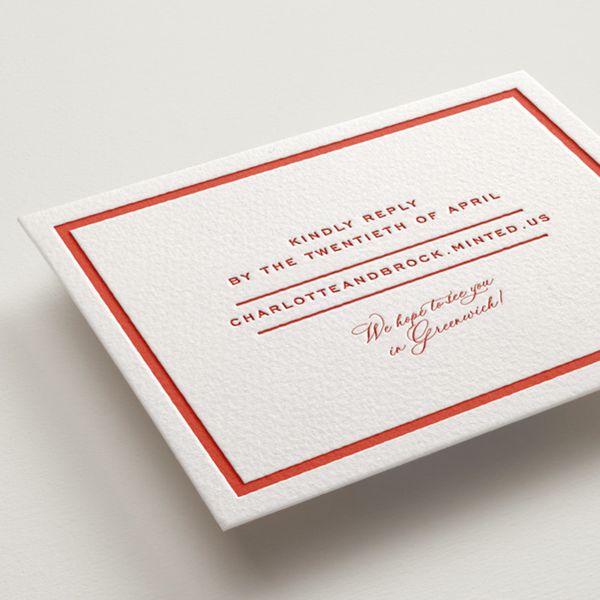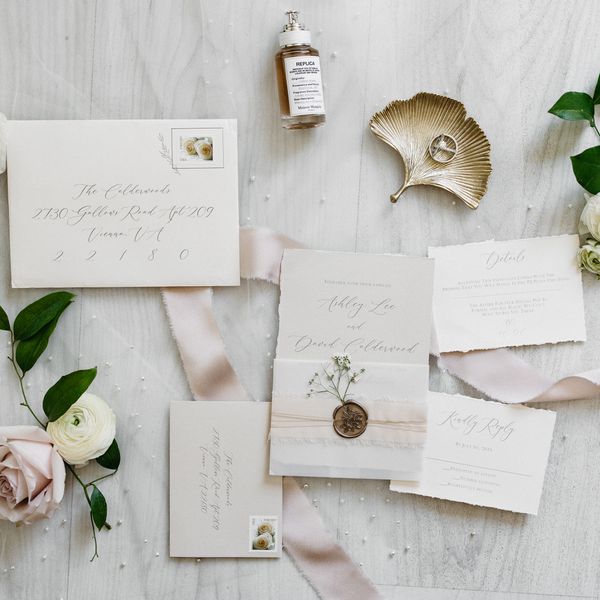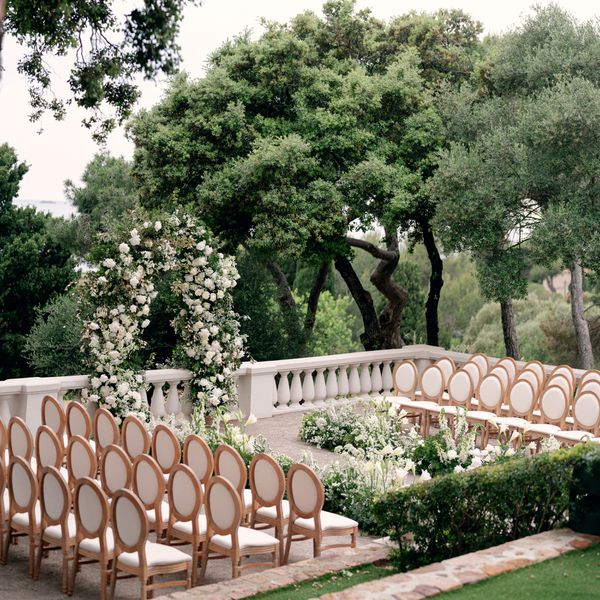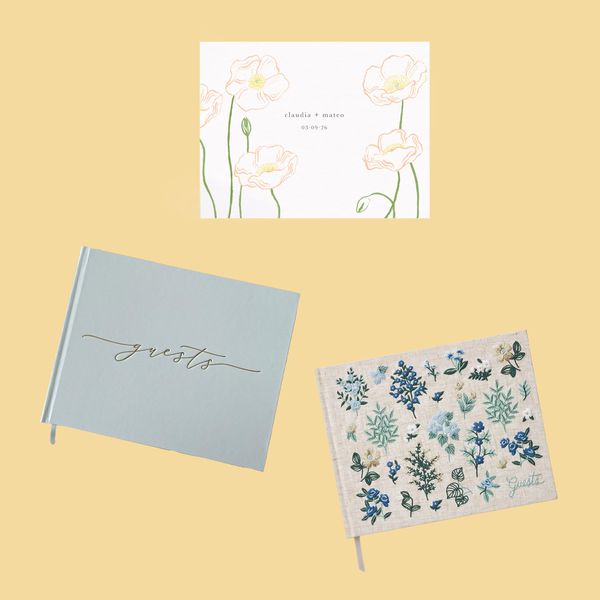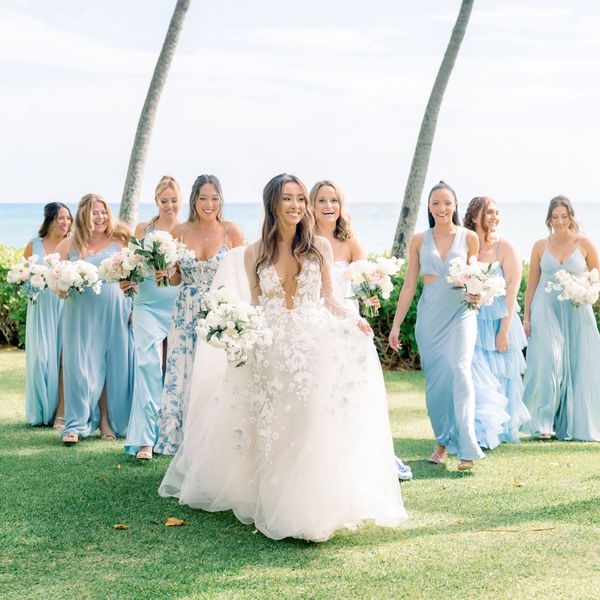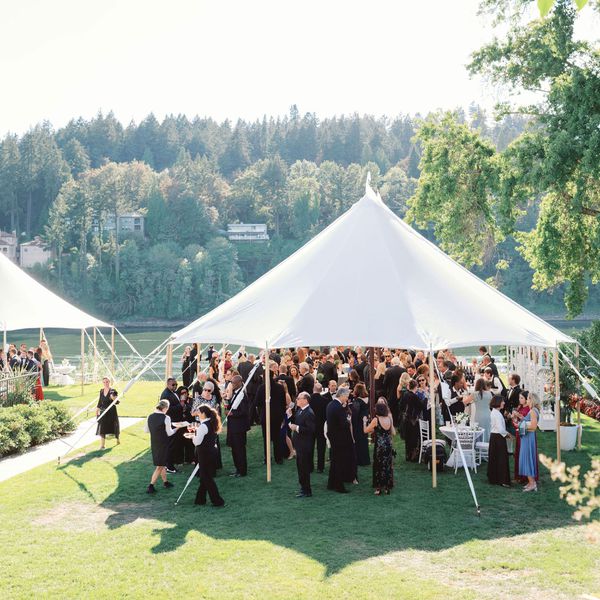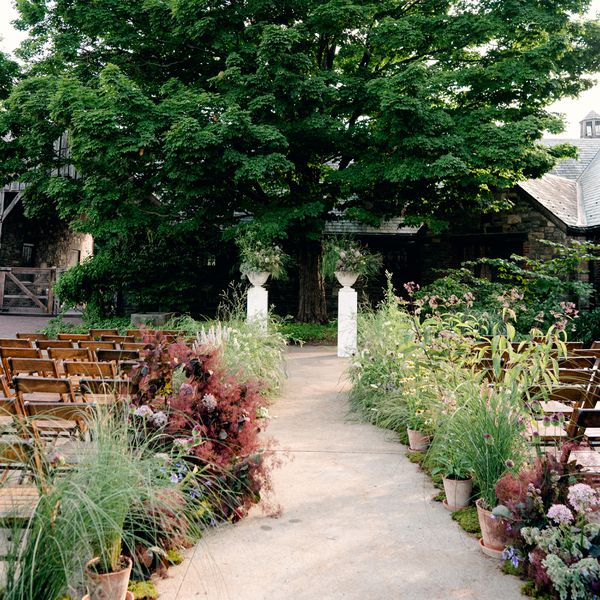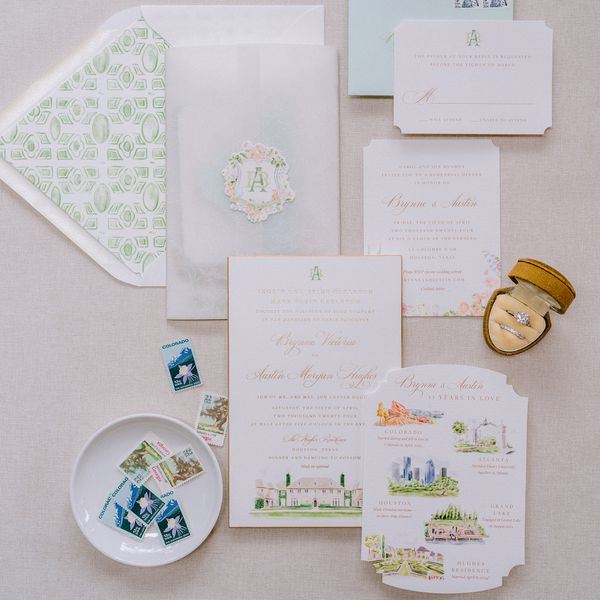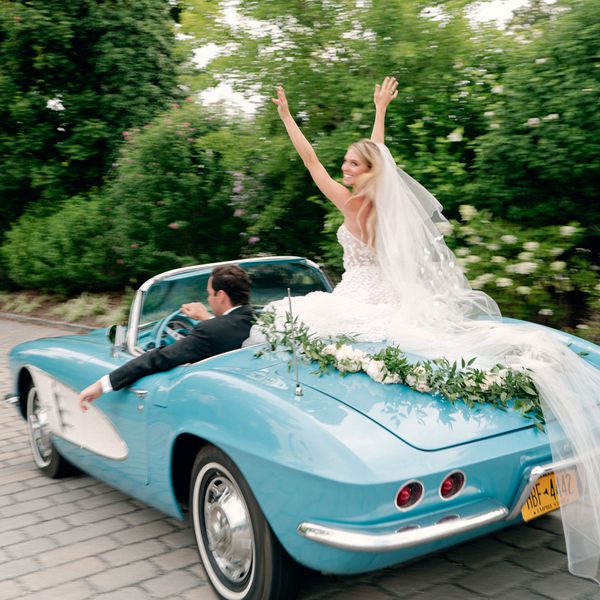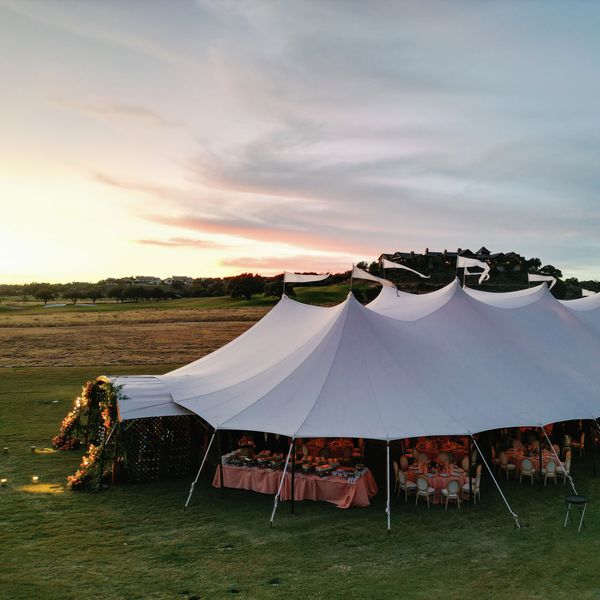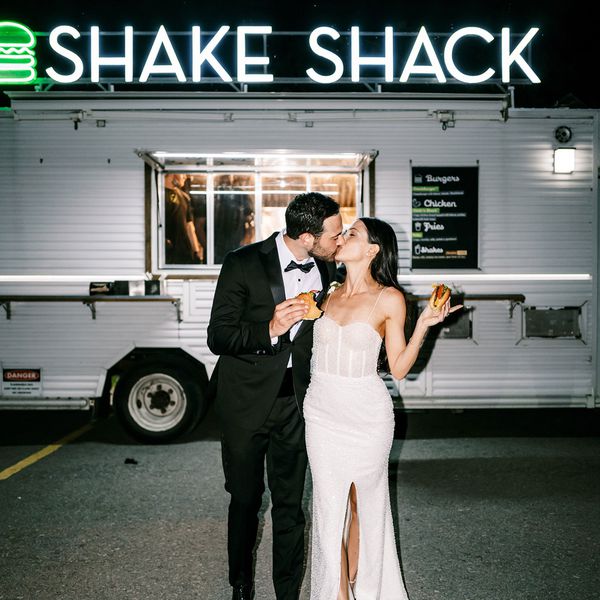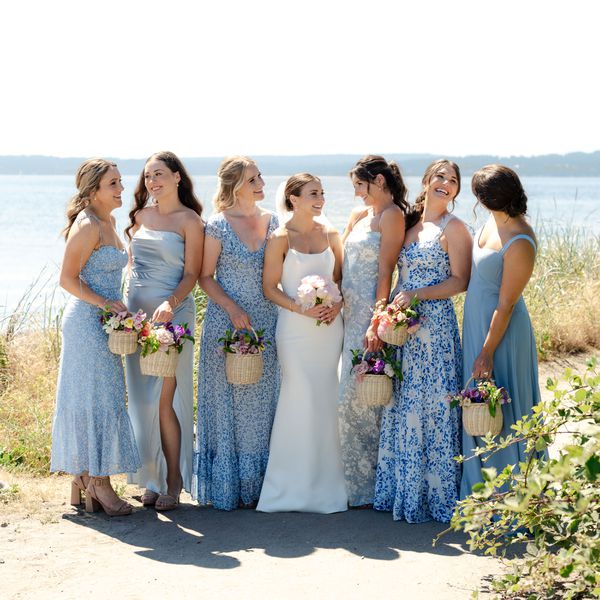:max_bytes(150000):strip_icc()/wedding-rsvp-mistakes-recirc-getty-images-6bad5eda8b40414da39773b524b65170.jpg)
Tony Anderson / Getty Images
Peering into your mailbox and seeing a thick envelope trimmed with intricate calligraphy (or opening up the message in your inbox) is an exciting moment—it means you’ve been invited to a wedding. While receiving a wedding invitation is a huge honor, in order to attend said nuptials, you’ll need to confirm your attendance by RSVPing. Even if you have a conflicting commitment that prohibits you from making an appearance at the event, you’ll still have to notify the couple about your absence. Not only is alerting the soon-to-be newlyweds a courteous and respectful gesture, but it’s also necessary—couples rely on RSVPs to finalize all of the day-of details, from the seating arrangements to the reception menu.
Wondering what RSVPing to a wedding actually entails? If the couple followed the traditional route by mailing their invitations, their suite will also include a paper RSVP card, plus a return envelope with the proper postage. Sometimes, they’ll give their loved ones the option of responding through their wedding website. And if the duo sent electronic invitations, you’ll RSVP via the aforementioned website or a designated app.
Meet the Expert
- Sunna Yassin is the owner of Bash Please, a wedding and event production, styling, and design company serving San Francisco, Los Angeles, and beyond.
- Kate Ryan is the owner of Gold Leaf Event Design & Production, a luxury destination event planning and design firm.
- Michelle Norwood is a destination wedding and event planner and designer with over 20 years of experience. She owns Michelle Norwood Events.
- Niki Sharifi is the general manager of The Eventeur, a wedding planning and design company that specializes in orchestrating destination weddings in Mexico, the Dominican Republic, and Cartagena.
Whether you’re responding by hand or digitally, in both instances, the couple will ask for certain information, such as the names and number of people attending, each guest’s meal preference, any dietary restrictions, and sometimes, flight arrangements and accommodations for destination weddings, according to Sunna Yassin, owner of Bash Please. While you might think filling out these details seems pretty straightforward, there are a few common errors that invited friends and family members tend to make, which can negatively affect the couple’s planning process.
Before confirming or declining the invitation, read through the below top 10 wedding RSVP mistakes that guests often commit, plus the proper ways to respond, according to four professional wedding planners.
Forgetting to RSVP
All of us have busy lives, so it’s easy to let a wedding RSVP fall through the cracks. Or perhaps ignoring an engaged pair’s RSVP is intentional: If you’re the bride’s sister or the groom’s best friend, for instance, you might think notifying the couple is pointless when your attendance is a given and you’ve already given verbal confirmation. No matter what your relationship to the duo is, though, wedding RSVPs are mandatory.
Whether or not you plan on making an appearance at the soirée, failing to respond to the wedding invitation prevents the couple from seamlessly attending to the details and logistics of the event. “Forgetting to RSVP stalls the planning process for hosts and takes time out of their planning process to follow up with guests who aren’t as cognizant of replying on time,” says Kate Ryan, owner of Gold Leaf Event Design & Production. To make sure you aren’t committing this faux pas, Yassin recommends responding to the invitation as soon as possible. If, for whatever reason, you need to RSVP later, make note of the deadline in your calendar.
Responding Past the Deadline
While some guests forget to reply, others send their responses back late. On every wedding invitation, the couple will specify an “RSVP by” date, which is often three to four weeks before the big day. If you fail to respond by the deadline, you’ll interrupt the planning process and cause a lot of unnecessary stress for the pair.
To prevent the hosts from tracking down your response, Yassin recommends replying promptly—immediately after you receive the invitation. If you aren’t sure whether you can make the celebration, she still advises informing the host as soon as you know, not waiting until the last minute.
Writing in Illegible Handwriting
If you’re replying to a wedding invitation by mail, you may have to fill out the RSVP card by hand. Michelle Norwood, owner of Michelle Norwood Events, notes that responding in illegible handwriting is a common mistake that guests make with paper RSVPs. If the hosts aren’t able to read your name or discern any other key information, they’ll have to gather the data on their own, which is a hassle for them.
When you’re replying to a wedding invitation, make an effort to slow down and write the details carefully and conscientiously. Check that each letter is legible. This will save the host time trying to figure out who responded and what they said.
Neglecting the Number of Guests Attending
On wedding RSVP cards, there is usually a slot for guests to inform couples how many individuals will be attending the affair. Norwood says skipping this section is a big blunder, particularly if the couple has given you a plus-one, the invitation was sent to you and your spouse, or if your kids made the guest list. “When our team receives RSVPs and the guest is part of a couple and has only RSVPed for one person, it makes it challenging to get a proper headcount,” says Niki Sharifi, general manager of The Eventeur. Sharifi encourages you to read the RSVP form properly and to specify the number of guests who will and will not be attending.
Failing to Include the Name of Each Guest
Just like guests often neglect mentioning the number of individuals who are able to make the festivities, they also tend to forget to include the names of each future attendee. “For written/mailed RSVP cards, there are always a handful that are returned with a blank space where the guest’s name is intended to be written,” Ryan shares. To give the hosts an accurate estimate, clearly write your name and any other invited guests’ names. For example, if the envelope is addressed to both you and your spouse, write your name and your spouse’s name in the appropriate section.
Using Nicknames
When filling out your paper RSVP card, using your nickname is a wedding faux pas that Sherifi sees guests making time and time again. “This can confuse whoever is collecting the RSVPs because this is typically the list planners refer back to when finalizing the seating chart,” she explains. Even if the couple refers to you by your nickname, it’s better to use your legal name. To avoid a potential misunderstanding, print the name that’s listed on the envelope, which is most likely your full name.
Adding an Uninvited Guest’s Name
Adding an uninvited guest to the RSVP card is a presumptuous wedding RSVP mistake some guests make that puts couples in an awkward position. If you’re single, a plus-one isn’t a given. Instead of assuming that you’re allowed to bring a date, closely inspect the envelope. If it has your name, followed by the verbiage, “and guest,” the couple has given you permission to invite a plus-one. “If no additional guests are mentioned, respect the hosts' wishes and attend solo,” Yassin says.
Parents with children often commit this blunder, too. If the invitation specifies that the affair is a no-kids or adults-only wedding, including your kids’ names on the RSVP card will inconvenience the couple. Be on the lookout for those key terms and pay close attention to the names written on the envelope. The only time it’s appropriate to include your kids in the RSVP is if they’re explicitly invited, according to Yassin. Otherwise, you’ll have to arrange for a babysitter.
Leaving the Meal Section Blank
At weddings with a planned sit-down dinner, the RSVP card will ask that you select your preferred entrée from a list of options. Some invited friends and family skip this section altogether, or they indicate their own preference, but not that of their partner or children (if they were invited), per Norwood. Sharing this information is essential for caterers to prepare the appropriate number of meals, so inspect the form carefully and highlight your desired dish. If your invitation was addressed to you and another person or several people, state who is having which meal.
Overlooking Dietary Restrictions
Along with meal options, couples will also inquire about dietary restrictions on the RSVP card. If you have a food intolerance, it’s essential that you disclose this information with the couple. “When RSVPing, clearly communicate any dietary restrictions or allergies to the hosts,” Yassin advises. “This ensures that the hosts can accommodate specific dietary needs and ensure the safety of all guests.” Without this intel, you’ll be served the standard meal, which might not accommodate your intolerances. If you do share your dietary restrictions, the chef will prepare a special dish catered to your needs.
Sharing Food Preferences
Some guests, however, mistake dietary restrictions for dietary preferences. On the RSVP card, couples are interested in knowing if your body is intolerant of a certain food, not your culinary likes and dislikes. If you don’t like any of the meal options listed, try your best to go with the flow.


